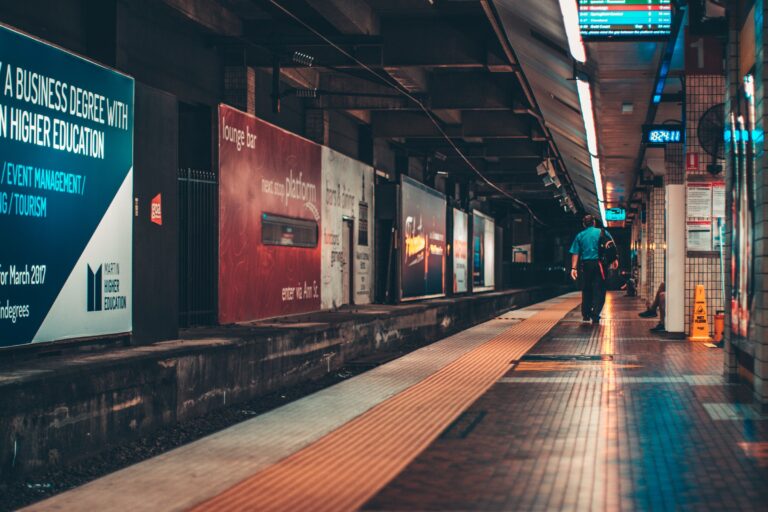So low is Australia’s unemployment rate, the official count says there are now just 580,300 people unemployed – the least since 2009, when Australia’s population was one-sixth smaller than it is today. Compared to just before the start of the pandemic, 184,800 fewer Australians are now unemployed.
Yet surprisingly, the number of Australians on unemployment benefits (now known as JobSeeker and Youth Allowance Other) remains higher than at any point before the pandemic, at 935,300. This is 49,100 more than before COVID.
The apparent paradox has some people questioning the unemployment figures, while others are asking whether there are people getting benefits who should not.
We think we have worked out a lot of what’s happened, and – to jump straight to one of our important findings – it isn’t the unemployment figures that are at fault.
You might be surprised to discover that many Australians who are unemployed are not on unemployment benefits.
Prior to COVID, the Parliamentary Library found only about 30% of unemployed Australians were on benefits. It used the Bureau of Statistics survey of income and housing to estimate the overlap between benefits and unemployment.
Even odder, many of the Australians on those benefits (paid to those with the “capacity to work now or in the near future”) are not unemployed as defined by the Bureau of Statistics and international statistical agencies.
Some are not seeking and not available for work. Others are in part-time work, able to get benefits because their employment income is low – but therefore not unemployed.
Unemployment and benefits used to move together
For most of the past 40 years, the number of people on unemployment benefits and the number unemployed have generally tracked each other, although since 1994 there have been more people on benefits than unemployed.
So what explains what’s happened since COVID?
One thing to note is that it is perfectly legal to receive unemployment benefits if you have a part-time job. In fact, Australian governments have been trying to encourage this since the 1980s.
The Bureau of Statistics and international statistical agencies define “employed” as at least one hour per week. Yet the Department of Social Services makes JobSeeker available to low-income Australians working casual and part-time.
Before COVID, in December 2019, about 140,000 people – 7% of those on benefits – were also working part-time.
Also in December 2019, 407,000 people (about half those receiving unemployment benefits) were classified as “non-jobseekers”.
“Non-jobseekers” can receive JobSeeker in a range of circumstances, including
- undertaking approved full-time voluntary work or a combination of voluntary and part-time work
- undertaking one or more other activities including training, education and self-employment development that are not job search
- being temporarily ill or incapacitated
- being a single principal carer (such as a single parent) granted an exemption from the requirement to search for work for reasons including foster care and home schooling
How many people there are in these situations now is hard to determine, not least because the Department of Social Services stopped publishing the number of “non-jobseekers” when the benefit started being called JobSeeker in early 2020.
It is likely that before COVID, in December 2019, around 267,000 people were both unemployed and receiving the main unemployment benefit. Given that 667,000 people were classified as unemployed at the time, this suggests that only around 40% of those classified as unemployed were receiving benefits.
Among those not receiving unemployment benefits would have been
- people excluded by the partner income test (before COVID an unemployed person whose partner earned more than $925 per week was ineligible, making more than two-thirds of second earners ineligible)
- sole traders who face more complex income-testing procedures intended to limit access to payments
- people with $5,500 or more in available liquid assets, who have to wait between one and 13 weeks. If they find a job before then, they will have been counted as unemployed without receiving payments
- seasonal workers excluded by preclusion periods applying to people who have earned more than average earnings in the six months before they claim. This applies to “fly-in, fly-out workers”, lobster and abalone fishermen, people working in arts and entertainment, and people doing relief work
- people who lost their job facing a preclusion period because they were paid a lump sum that was intended to cover sick leave, annual leave, long service leave, a termination payment or a redundancy payment
- newly arrived permanent residents in Australia for less than four years face a waiting period (NARWP). This was 26 weeks when imposed in 1993, then extended to 104 weeks in 1997 and 208 weeks in 2019
- temporary foreign visa holders. Students, backpackers, skilled visa holders and many people from New Zealand are not eligible for benefits. In the last census, there were 104,700 temporary visa holders unemployed, making up 13.5% of all the unemployed people in Australia
- people receiving other payments including parenting payment single, carers payment and the disability support pension. Our calculations suggest there were around 75,000 people unemployed but receiving one of these other payments in 2017-18, about 10% of the unemployed in that year.
Many chose not to claim – and then came COVID
Not all people eligible for unemployment benefits claim them.
Among the reasons identified in international studies are lack of information, the level of benefits (some can be so low it is not seen as worth the effort) and stigma.
Since 2015, there has been considerable publicity given to a government program presented as recovering overpayments known as “Robodebt”. This might have discouraged people from claiming, at least until the widespread distribution of benefits during COVID.
And then came COVID. In just four months between March and July 2020, the number of unemployed people shot up 220,000, the number on unemployment benefits soared 735,000 and the number employed plunged 533,000.
During those months, the highly-publicised Coronavirus Supplement effectively doubled the size of unemployment benefits and removed much of the stigma associated with claiming them.
As well, many of the conditions that limited access to the benefits were temporarily suspended.
These included preclusion periods, making instantly eligible not only the people who lost their jobs, but also people already unemployed who had been ineligible.
Receiving benefits became easier and more normal, and also more worthwhile.
More people have stayed on benefits
These more generous eligibility conditions were wound back between September and December 2020. While the number of recipients declined substantially, it remained and still remains well above the number unemployed.
We have calculated what we call “net coverage” of the JobSeeker and Youth Allowance (Other) unemployment benefits.
This excludes from the total people who the Bureau of Statistics would not define as unemployed (those with earnings from work, and those with only a partial capacity to work) and presents it as a proportion of the total unemployed.
It suggests that pre-COVID, only 44% to 52% of people the bureau counted as unemployed were on unemployment benefits.
As COVID payments peaked, this shot up to around 100% of all unemployed people being on benefits.
Even now, with special payments stopped, it remains higher than it was before COVID, at about 75%.
Put differently, on our (admittedly imperfect) measure, about one in four of Australia’s unemployed are not receiving benefits, whereas before COVID it was one in two.
The missing data we still need
What we do know is that the share of those on unemployment benefits with earnings has climbed from 17% to 21% since COVID, possibly as a result of greater take-up.
There are about 60,000 more people in part-time work and on payments than before COVID.
We also know that the number of people aged 65 years and over receiving JobSeeker has roughly tripled in the past three years (from a low base), with roughly 23,000 more people over 65 on JobSeeker.
In 2021 the age pension age rose from 66 years to 66 years and six months.
And we know that rules limiting the access of relatively highly paid seasonal workers to JobSeeker will have worked differently during COVID, as many will not have had the opportunity to work they had before.
This would be especially true for workers in arts and entertainment.
Also, people excluded by the residence waiting periods and temporary foreign workers are likely to form a lower share of the Australian population than before borders were closed.
But all of our explanations are tentative, since we don’t have the data to be definitive. We would know more if the Department of Social Services and the Australian Bureau of Statistics improved the quality of their data and the Department of Social Services made public more of the data it has.
But what we’ve uncovered suggests that the unusually high number of people on unemployment benefits is neither a sign that there are more people on benefits who don’t want to work than before, nor a sign that the official unemployment rate is less reliable than before.
Decisions made on the assumption that the unemployment rate is unreliable or that the nearly one million Australians on unemployment benefits don’t want to work would do us a disservice.![]()
This article is republished from The Conversation under a Creative Commons license. Read the original article.






Pingback: Budget Forum 2023: Stage 3 Tax Cuts and JobSeeker – A Slightly Different View - Austaxpolicy: The Tax and Transfer Policy Blog